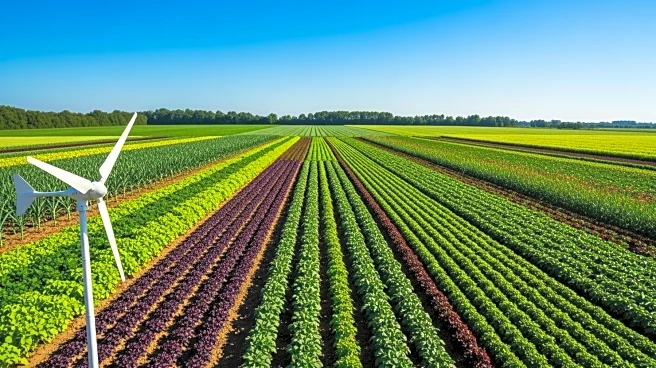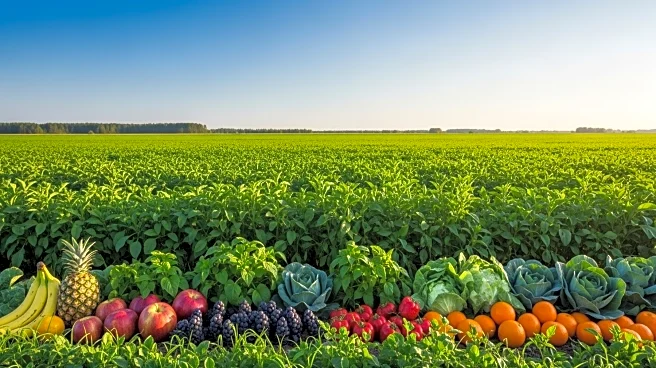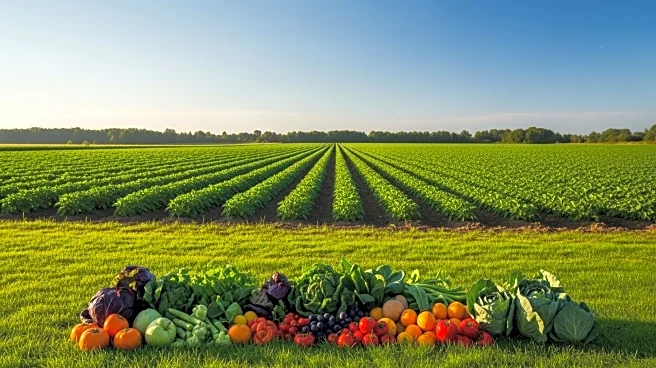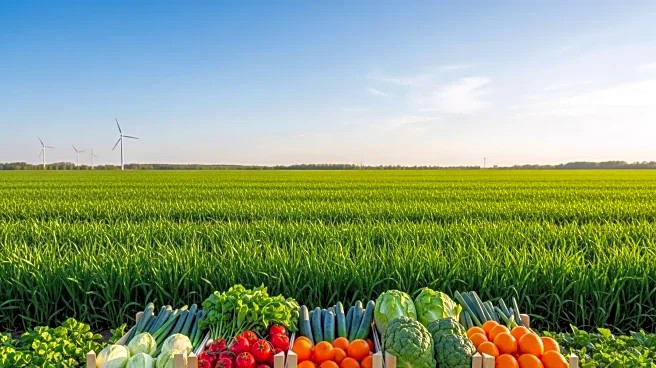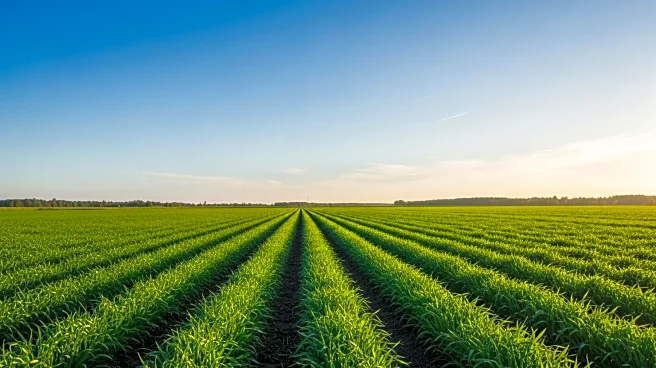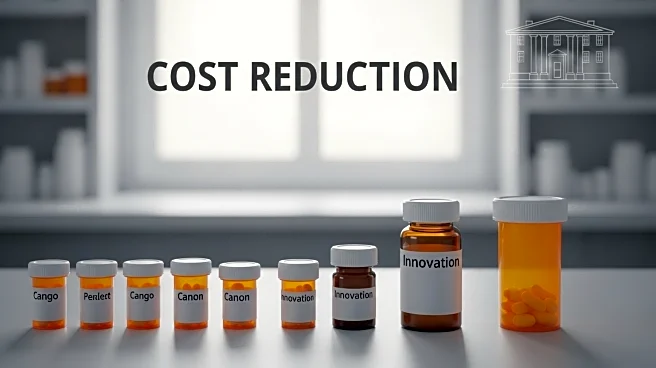What is the story about?
What's Happening?
The U.S. Department of Agriculture has invested over $46 million in 2023 under its Sustainable Agriculture Research and Education program to promote regenerative agriculture practices. This initiative is part of a broader effort to restore soil health, conserve biodiversity, and create resilient food systems. The global regenerative agriculture market, valued at $10.63 billion in 2024, is projected to grow to $30.30 billion by 2032, with a compound annual growth rate of 14.2% from 2025 to 2032. The expansion is supported by government policies, financial incentives, and rising consumer demand for organic and naturally produced food. Companies like Indigo Ag are encouraging farmers through carbon credit schemes, demonstrating the financial viability of regenerative farming.
Why It's Important?
Regenerative agriculture is gaining traction as it offers economic benefits alongside environmental responsibility. For U.S. farmers, these practices improve soil fertility, reduce dependency on chemical inputs, and enhance crop resilience to climate variability. Additionally, they provide new revenue streams through carbon credits and meet the rising consumer demand for sustainably produced food. The U.S. market is expected to lead globally, supported by strong government policies and consumer preferences. This shift not only supports environmental goals but also offers long-term profitability and security in farming, making it a preferred choice for farmers.
What's Next?
North America is expected to record the fastest growth rate in regenerative agriculture through 2032, driven by policy support, technological infrastructure, and private investment. Programs in the U.S. and Canada will continue to help farmers adopt soil health improvements and biodiversity conservation. Collaborative initiatives by major corporations like Cargill, General Mills, and Unilever are expanding, indicating a growing intersection of corporate responsibility, climate goals, and farming innovation. These developments suggest a continued focus on scaling regenerative agriculture practices.
Beyond the Headlines
The rise of regenerative agriculture highlights a shift towards sustainable farming practices that balance economic and environmental goals. This movement is not only ecological but also financially viable, offering farmers new income opportunities through carbon credits. The integration of technologies such as AI-based analytics and remote sensors is enabling precise resource management, further enhancing the benefits of regenerative methods. As more studies validate these practices, they are likely to become a cornerstone of modern agriculture, influencing policy and investment decisions globally.
AI Generated Content
Do you find this article useful?
